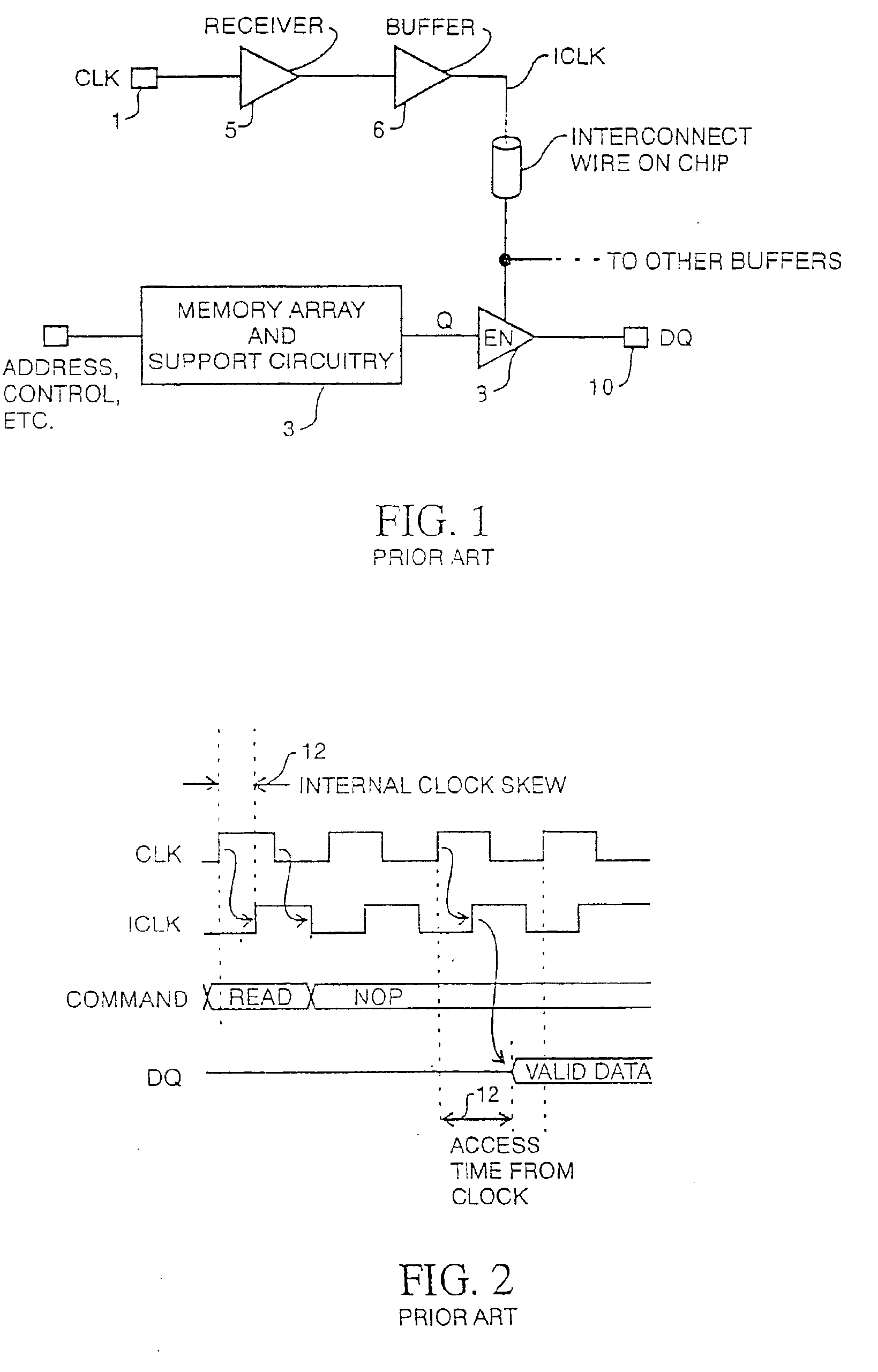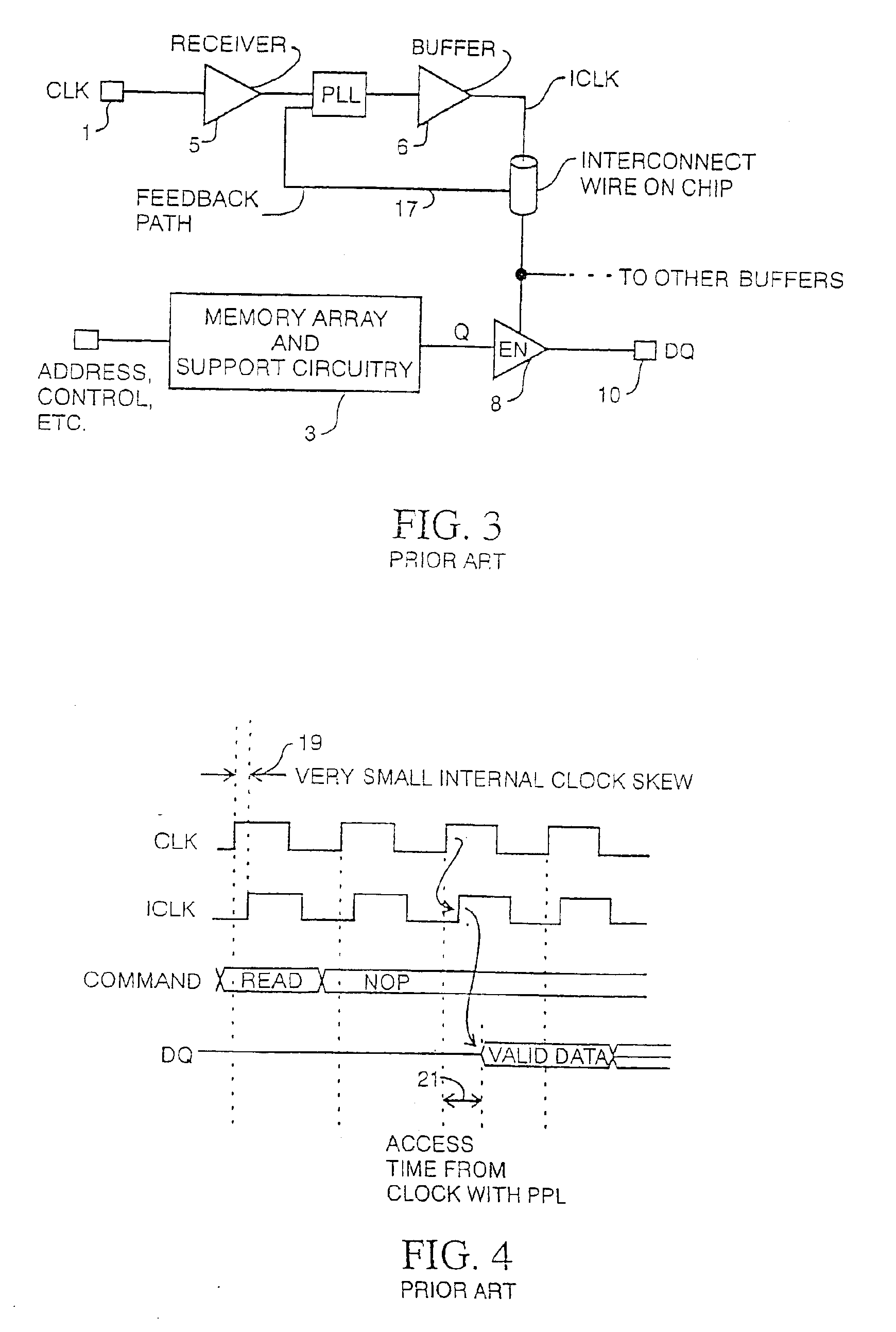Delay locked loop implementation in a synchronous dynamic random access memory
a random access memory and lock loop technology, applied in the field of semiconductor memories, can solve the problems of limiting the limitation of the operating frequency of the part, and the pll solution also suffers from problems, so as to reduce the elapsed time, reduce the standby current and start-up time, and the effect of increasing the clock frequency
- Summary
- Abstract
- Description
- Claims
- Application Information
AI Technical Summary
Benefits of technology
Problems solved by technology
Method used
Image
Examples
Embodiment Construction
[0019]Turning to FIG. 5, an input clock signal is applied to a tapped delay line formed of a series of delay elements 25 such as inverters. The outputs of predetermined ones of the delay elements, which can be each one of the delay elements, are provided to the inputs of a selection apparatus such as a multiplexer 27. The output of the multiplexer 29 provides a signal, referred to herein as a driving clock signal, which in this embodiment is applied to the enable terminal of the output buffer in a manner as described above with respect to the prior art systems.
[0020]A delay comparator 31 has one input that receives the input clock signal, and another input that receives the driving clock signal. The comparator 31 outputs a control signal which has a value that depends on the differential between the input clock signal and the driving clock signal. That control signal is applied to the control inputs of multiplexer 27, and determines which of the inputs to it are passed through it to...
PUM
 Login to View More
Login to View More Abstract
Description
Claims
Application Information
 Login to View More
Login to View More - R&D
- Intellectual Property
- Life Sciences
- Materials
- Tech Scout
- Unparalleled Data Quality
- Higher Quality Content
- 60% Fewer Hallucinations
Browse by: Latest US Patents, China's latest patents, Technical Efficacy Thesaurus, Application Domain, Technology Topic, Popular Technical Reports.
© 2025 PatSnap. All rights reserved.Legal|Privacy policy|Modern Slavery Act Transparency Statement|Sitemap|About US| Contact US: help@patsnap.com



